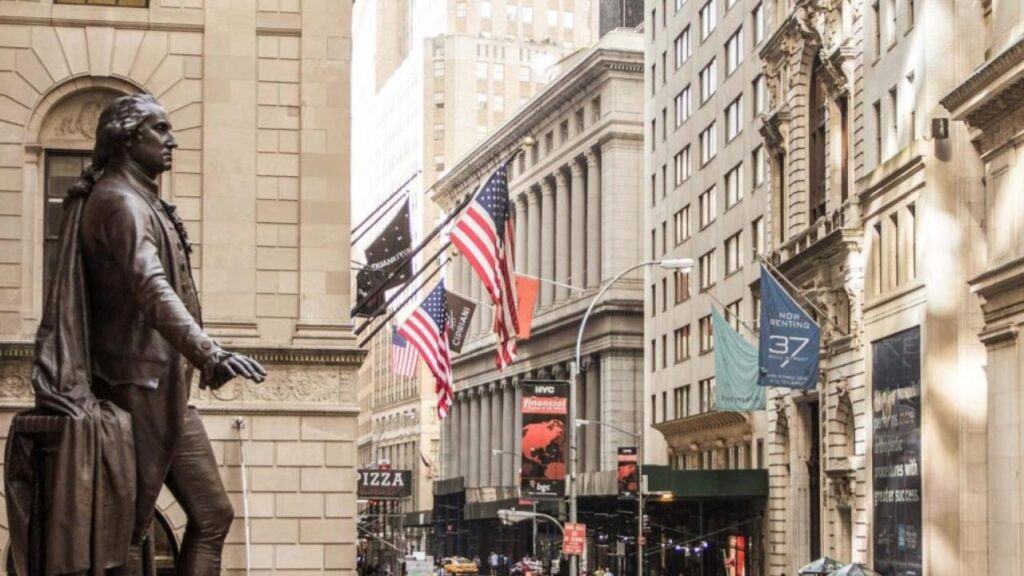Gap Inc. just pulled a move that has Wall Street scratching its head—and its stock price is taking the hit. The company delivered a solid Q1 2025 performance, topping earnings estimates and reporting positive same-store sales for the fifth straight quarter. But here’s the kicker: Gap slid in a hidden detail about potential $300 million in new U.S. tariffs — and then decided not to include that bombshell in its financial forecast.

In a market that thrives on transparency and clarity, this surprise omission didn’t sit well with investors. Shares of Gap (NYSE: GPS) nosedived over 16% in after-hours trading as Wall Street digested the gap (pun intended) between what the company said and what it didn’t.
Gap’s Hidden $300M Shock: Wall Street Reacts
| Detail | Description |
|---|---|
| Company | Gap Inc. (NYSE: GPS) |
| Q1 2025 EPS | $0.51 vs $0.14 estimated |
| Revenue | $3.39 billion |
| Same-store Sales | +2% overall; Gap +5%, Old Navy +3% |
| Stock Reaction | -16% in after-hours trading |
| Tariff Risk | Up to $300 million, not included in forecast |
Gap Inc. is at a crossroads. With strong Q1 numbers in the bag, the retailer is clearly on the mend. But the surprise tariff risk and lack of transparency in its forecast is a big red flag. Investors now have to weigh short-term market turbulence against the company’s long-term potential.
If Gap wants to keep the market on its side, it better tighten up its forecasting game—because Wall Street doesn’t like to play blindfolded.
What’s the Big Deal About These Tariffs?
Gap acknowledged the potential $250 million to $300 million in added costs due to possible U.S. tariffs, mainly from renewed pressure on goods sourced from China. While the company mentioned mitigation strategies, it didn’t factor these figures into its 2025 forecast.
That means investors are staring down the barrel of a forecast that might be, well, too optimistic. Tariffs could shave off as much as $150 million in operating income if mitigation efforts fall short.
Translation: Gap’s guidance might be dressing up for a party it can’t afford to throw.
Why Did Gap Exclude Tariff Costs?
Gap CFO Katrina O’Connell explained that the tariffs are still hypothetical. So, instead of updating its fiscal outlook based on a maybe, they decided to hold off. While that’s a cautious and conservative approach internally, Wall Street doesn’t like ambiguity—especially when we’re talking about nine-figure risks.
“We feel good about how we’re managing the business…but the tariffs remain an unknown,” O’Connell stated during the earnings call.
Where Gap Did Well (And Deserves Credit)
Despite the tariff drama, let’s give Gap its due. The company is showing signs of a solid turnaround:
- Old Navy and Gap brand both saw higher sales.
- Operating margin grew thanks to better inventory management.
- It’s on track to reduce Chinese sourcing to less than 3% by the end of 2025, reducing future tariff exposure.
The 5% sales growth in Gap brand alone is impressive, especially considering how stale the brand had become over the last decade.
Wall Street’s Reaction: Don’t Spring Surprises
The market hates surprises. Especially the kind where you drop a bomb about $300 million in costs and then say, “But don’t worry, it’s not in the plan.”
The result? Stock price drop. Analysts quickly adjusted their risk assessments, with some downgrading GPS until further clarity emerges. Even if Q1 was a win, trust took a hit.
What Should Investors Do Now?
If You’re Holding GPS Stock:
- Be aware that volatility could persist.
- Watch for updates on tariffs and mitigation strategies.
- Expect more analyst revisions soon.
If You’re Considering Buying In:
- The stock may be undervalued if tariffs never materialize or are less than expected.
- But it’s a gamble without clear forward guidance.
- Look for safer entries when the company updates its forecast.
Gap’s Playbook Going Forward
- Sourcing Diversification: Reduce reliance on China to avoid future tariff hits.
- Brand Focus: Continue to lean on the resurgent Gap and Old Navy brands.
- Cost Management: Prioritize operating efficiency to cushion any external shocks.
Gap knows it’s got to play smart. The road to stability lies in clear communication, diversified operations, and building on its recent momentum.
Let’s Talk Numbers: How Much Could This Really Hurt?
Gap’s operating income last year was around $1 billion. A hit of $150 million would be a 15% drop, not exactly a minor hiccup.
Even with cost-saving measures, that’s a chunk of change that could spook investors and reduce cash for dividends, buybacks, or store refreshes.
Broader Retail Implications
Gap isn’t alone. Retailers across the board are watching tariff threats closely. If new tariffs hit, expect:
- Higher prices at checkout
- Squeezed margins for brands that haven’t diversified their supply chains
- Increased urgency to relocate sourcing to India, Vietnam, and Central America
Tariff Chaos: Trump Slams Political Ruling, Pushes Supreme Court to Intervene
Trump’s Tariff Leverage Is Gone—Taiwan Just Dominated the Game
Bernard Kerik Dead at 69—The Scandal, The Redemption, The End
Frequently Asked Questions (FAQs)
Q1: Why did Gap stock fall despite strong earnings?
A: Gap excluded up to $300 million in possible tariff costs from its forecast, spooking investors.
Q2: Will Gap really face $300 million in tariffs?
A: Not necessarily—it’s a worst-case estimate. The final cost could be much lower with mitigation.
Q3: What are Gap’s plans to avoid future tariffs?
A: Reduce sourcing from China to under 3% by end of 2025 and diversify supply chains.
Q4: Is now a good time to buy Gap stock?
A: It could be—but only if you’re comfortable with the uncertainty around tariffs.
Q5: What brands are performing best for Gap?
A: Gap brand and Old Navy both saw sales growth in Q1 2025.






